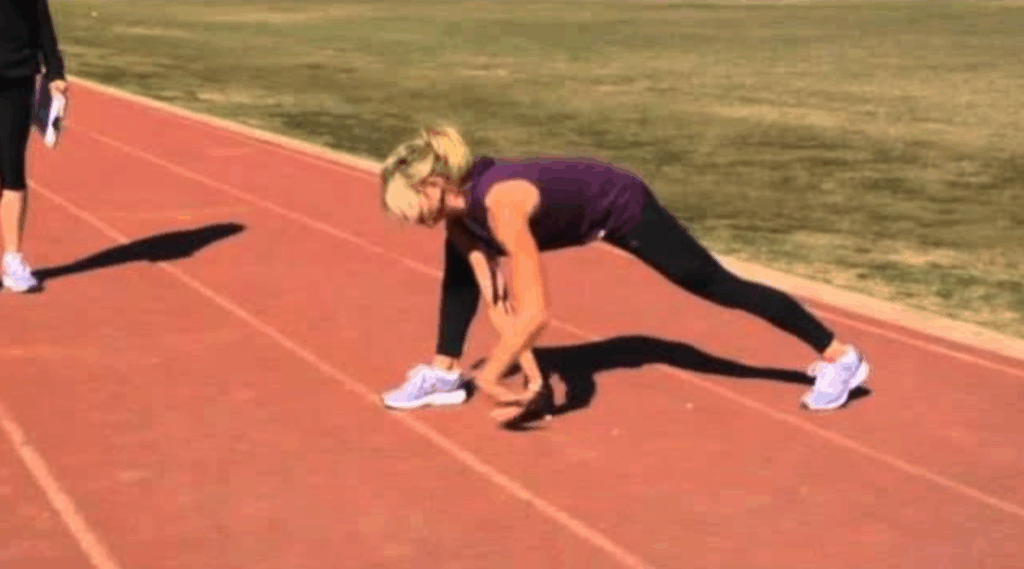If you plan it right, a 30-minute sprint session can make you a lot faster. Begin your session with a quick 5-minute dynamic warm-up. Mix in light jogging along with mobility drills that open up your joints and prep your body for movement. Spend 10 minutes doing acceleration drills like falling starts and resistance releases. Add in 10 minutes of flying sprints and high knees to push your top-end speed.
Wrap up your session with 5 minutes of easy jogging followed by static stretches to cool your body down. This scientific method helps you get the most out of your speed gains with the least amount of time spent.
The Science Behind Short, High-Intensity Sprint Training
Many athletes spend hours on endurance training, but studies show that short, high-intensity sprint sessions are better at making you faster in less time. When you work hard like this, your body responds by improving the recruitment of fast-twitch muscle fibers and the coordination between your muscles and nerves.
A good sprint session structure switches between maximum effort and planned recovery, which helps you keep up the quality throughout. This method causes physiological changes that make acceleration and top-end speed happen faster than longer, moderate-intensity workouts.
The key is to choose sprint drills that build explosive power while keeping good form. Your body needs good ways to recover between intervals so that it can get rid of metabolic waste and reset its energy systems. These short sessions are not only more effective, but they are also easier on your body in the long run.

Essential Dynamic Warm-Up Sequence (5 Minutes)
Before launching into high-intensity sprints, your body requires proper preparation to perform at its peak. A strategic dynamic warm-up increases blood flow, activates key muscle groups, and prepares your nervous system for explosive movement.
Begin with 60 seconds of light jogging, then shift to mobility exercises that loosen joints essential for proper stride mechanics. Next, perform activation exercises targeting your posterior chain. Do glute bridges, leg swings, and walking lunges with rotation.
Finish your warm-up with 60 seconds of gradually intensifying skips that mimic core sprint drills. These prepare your body for the technical demands ahead while raising your heart rate appropriately. Don’t rush this sequence.

Core Acceleration Drills for Explosive First Steps (10 Minutes)
The first few steps in a sprint determine your success in virtually every speed-based athletic scenario. After completing your warm-up, you’ll focus on these four acceleration drills:
- Falling Starts: Lean forward until you must take a step, then explode into 5-10 meters of acceleration.
- Push-Up Starts: From a push-up position, explosively drive up and forward into immediate acceleration.
- Quick Feet Ladders: Perform rapid foot patterns through an agility ladder, shifting directly into a 10-meter sprint.
- Resistance Releases: Have a partner provide light resistance with a band, then release unexpectedly to trigger your reaction time and explosive movement.
Perform each drill 4-5 times with full recovery between attempts. Your sprint training effectiveness depends on quality over quantity.
Maximum Velocity Technique Builders (10 Minutes)
Once you know how to do acceleration drills, you should work on your maximum velocity technique. This important part of getting faster needs special attention to form and mechanics.
For 20 meters, start with high knees and focus on strong arm movement and vertical force production. Next, do flying sprints: speed up for 20 meters, keep your top speed for 20 meters, and then slowly slow down. To ensure quality over quantity, do 4–6 sets with a 1:5 work-to-rest ratio.
In between sets, practice running in a relaxed way, paying attention to your tall posture and rhythmic breathing. Keep in mind that at top speed, you need to spend as little time on the ground as possible while increasing your stride length and frequency.

Optimal Cool-Down and Recovery Protocol (5 Minutes)
After completing the intense maximum velocity work, your cool-down protocol becomes essential for recovery and future performance gains. Begin with 2-3 minutes of light jogging to gradually decrease heart rate and clear metabolic waste from your muscles.
Follow with 1-2 minutes of static stretches targeting your prime movers, holding each for 15-20 seconds. These stretches help restore muscle length and prevent tightness.
Finish with deep breathing techniques. Inhale for four counts, hold for 2, exhale for 6. It activates your parasympathetic nervous system, accelerating recovery. Remember, proper cool-down isn’t optional. It’s when adaptation occurs and determines how quickly you’ll bounce back for your next speed session.
Frequently Asked Questions
Can Sprint Training Help Reduce Body Fat Percentage?
Yes, sprint training helps reduce your body fat percentage. You’ll burn calories during high-intensity sprints and boost your metabolism afterward, creating an “afterburn effect” that continues to torch fat throughout the day.
Should Beginners Wear Special Footwear for Sprint Drills?
You don’t need special shoes initially. Start with comfortable running shoes that provide good support. As you advance, consider lightweight trainers or sprint spikes for better traction and performance.
How Do Sprint Workouts Affect Muscle Growth Compared to Weightlifting?
Sprint workouts build fast-twitch muscle fibers and lean muscle, while weightlifting develops greater overall mass. You’ll gain explosive power and functional strength from sprinting, but you won’t see the same hypertrophy you’d achieve with resistance training.
Is Sprint Training Safe for People With Previous Knee Injuries?
Sprint training requires caution if you’ve had knee injuries. Consult your doctor first, start slowly, avoid excessive volume, and use proper mechanics. You’ll need to modify drills based on your specific injury history.
How Does Altitude Affect Sprint Performance and Recovery Times?
At higher altitudes, you’ll experience reduced oxygen availability, initially decreasing your sprint performance and extending recovery times. However, your body gradually adapts, potentially leading to improved endurance when you return to lower elevations.





